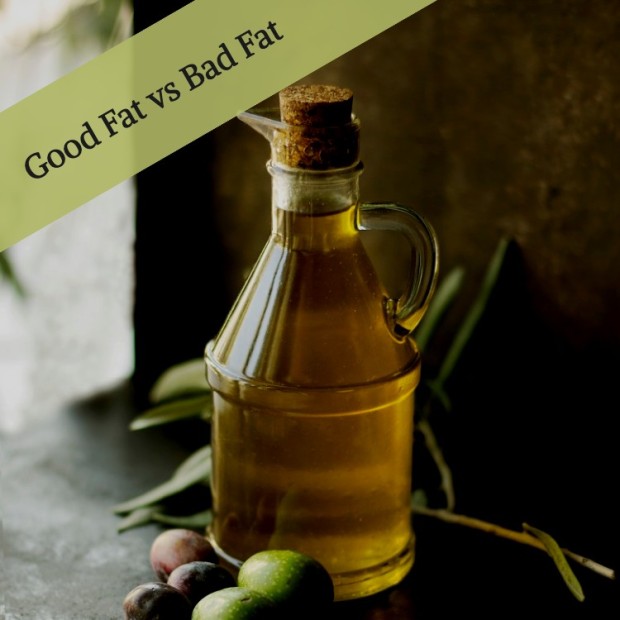
I remember back in my university days when my friend and I would go to the cafeteria to get a late night studying snack. We decided that getting Skittles was a good snack because it didn’t have any fat in it – therefore we wouldn’t get fat – hahahaha! Seriously. We thought that.
Well we all know now that fat is essential to optimal health (and that Skittles were probably one of the worst things we could have chosen for a snack – hello sugar!)
Fat is the building block for our cells and key hormones in our bodies! It is essential for weight loss, mood control, immune system function, brain development and heart health.
Fats can be broken down into 3 categories:
- Trans fatty acids
- Saturated Fats
- Unsaturated Fats – Monounsaturated Fats
– Polyunsaturated Fats – Essential Fatty Acids
Trans fatty acids are man-made. They are formed when liquid vegetable oils are made into solid fats like shortening and hard margarine through the process of hydrogenation.
Surprisingly, nearly all fried or commercial baked goods have some trans fat – boo! Trans fats are known for raising LDL (“bad”) cholesterol and lowering HDL (“good”) cholesterol. And are considered to be similar to the chemical components of plastic (yes – plastic – not a food!!)
The reason Trans fats are used in many foods is their shelf life and cheap cost. The shelf life of trans fats is a lot longer than most other fats and therefore used by food manufacturers. We should try to avoid it completely. Check the list of ingredients in store bought baked goods and stay away from any “partially hydrogenated” oils or “shortening” in the ingredients.
Saturated Fats are usually sold or almost solid at room temperature such as butter, cheese, cream, coconut oil, palm and palm kernel oil. You do not need to eliminate these fats from your diet. Eskimos and North American Indians had 80% of their daily caloric intake from saturated fats. The key to this type of fat is the source. Is it an organic, natural source or is it highly processed – that is the question.
Monounsaturated Fats are among the healthiest fast. They are found in olive oil and nuts and seeds and avocados.
Polyunsaturated Fats are found in vegetable oils such as safflower, corn, sunflower and soybean and fatty fish like salmon.
There certain fats that are essential to our well-being. These are called Essential Fatty Acids or EFA’s. This means our bodies are unable to manufacture them and we absolutely need them in our diet.
EFA’s are polyunsaturated fats and they come in 2 forms – Omega-3 and Omega-6. Omega-6 EFA’s come from grain products, meats and cooking oils such as corn, safflower and sunflower. Omega-3 EFA’s come from leafy green vegetables, Flaxseed, Hemp, Chia seeds, salmon, tuna, cod liver oil, eggs, and nuts.
We tend to naturally have more Omega-6 in our diets so it is the Omega-3 that we need to be conscious of including into our meals.
Here are some simple ideas to add healthy fats into your diet:
- 1 Tbsp coconut oil or Ghee (clarified butter) on your toast
- 1 Tbsp of chia or flaxseeds into smoothies
- Eating 6oz serving of fish like salmon, trout etc 2-3 times per week
- 8-10 nuts such as almonds or walnuts
- 1/4 of an avocado on a salad or in a sandwich or wrap
- 1-2 Tbsp of flaxseed oil in a dressing over a salad
- 2 Tips of toasted sesame seeds over a salad or on chicken
- 1 tsp of olive oil to make your morning eggs
- 1 Tbsp of ground flaxseed in your salad or smoothie or yogurt